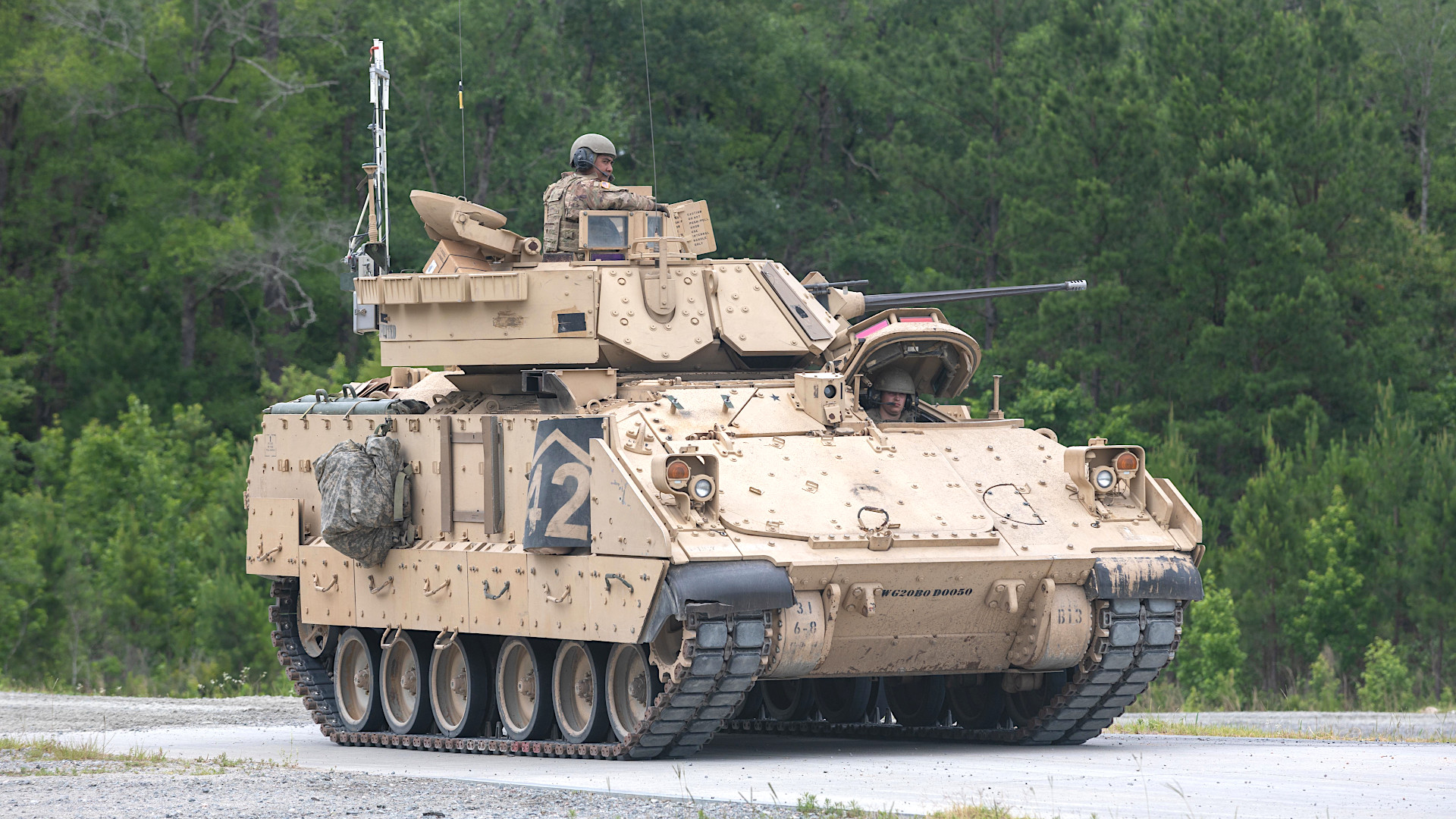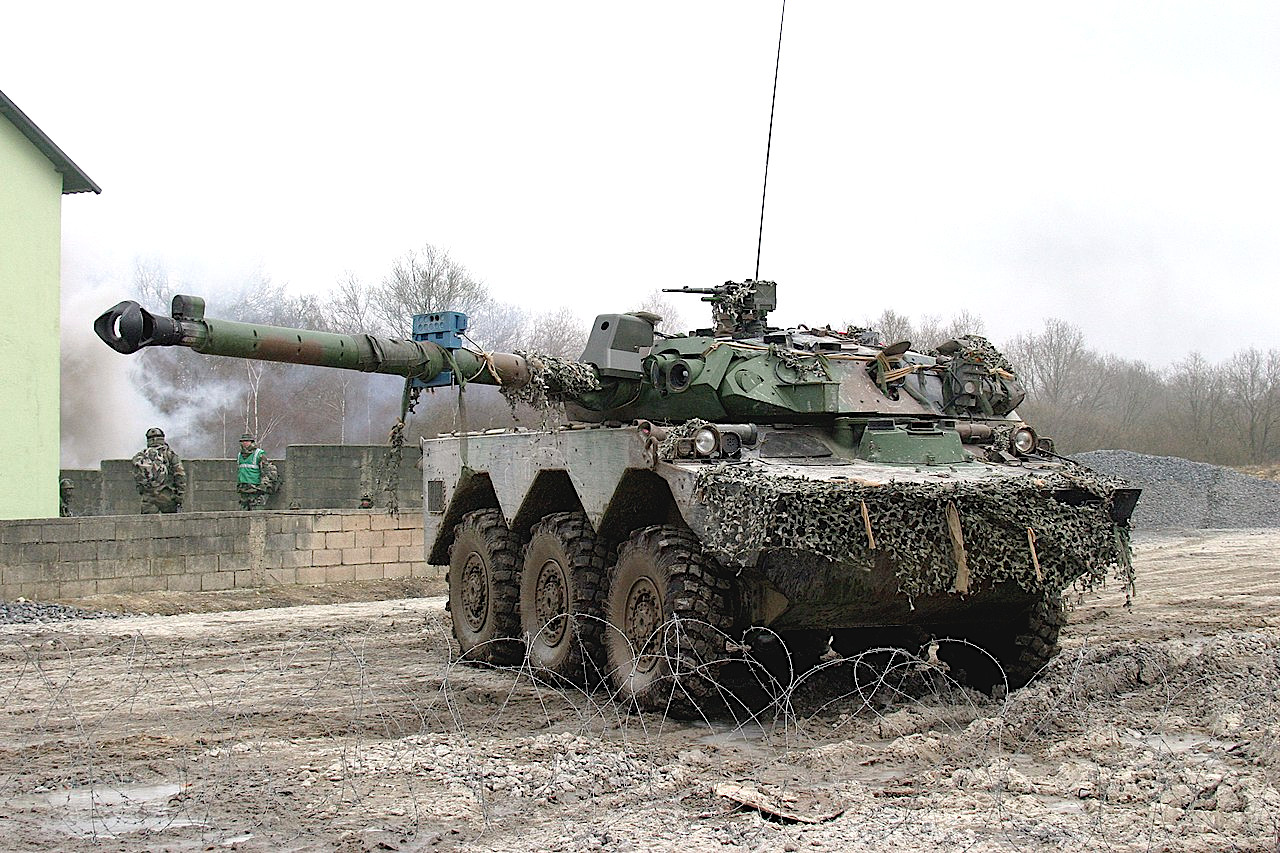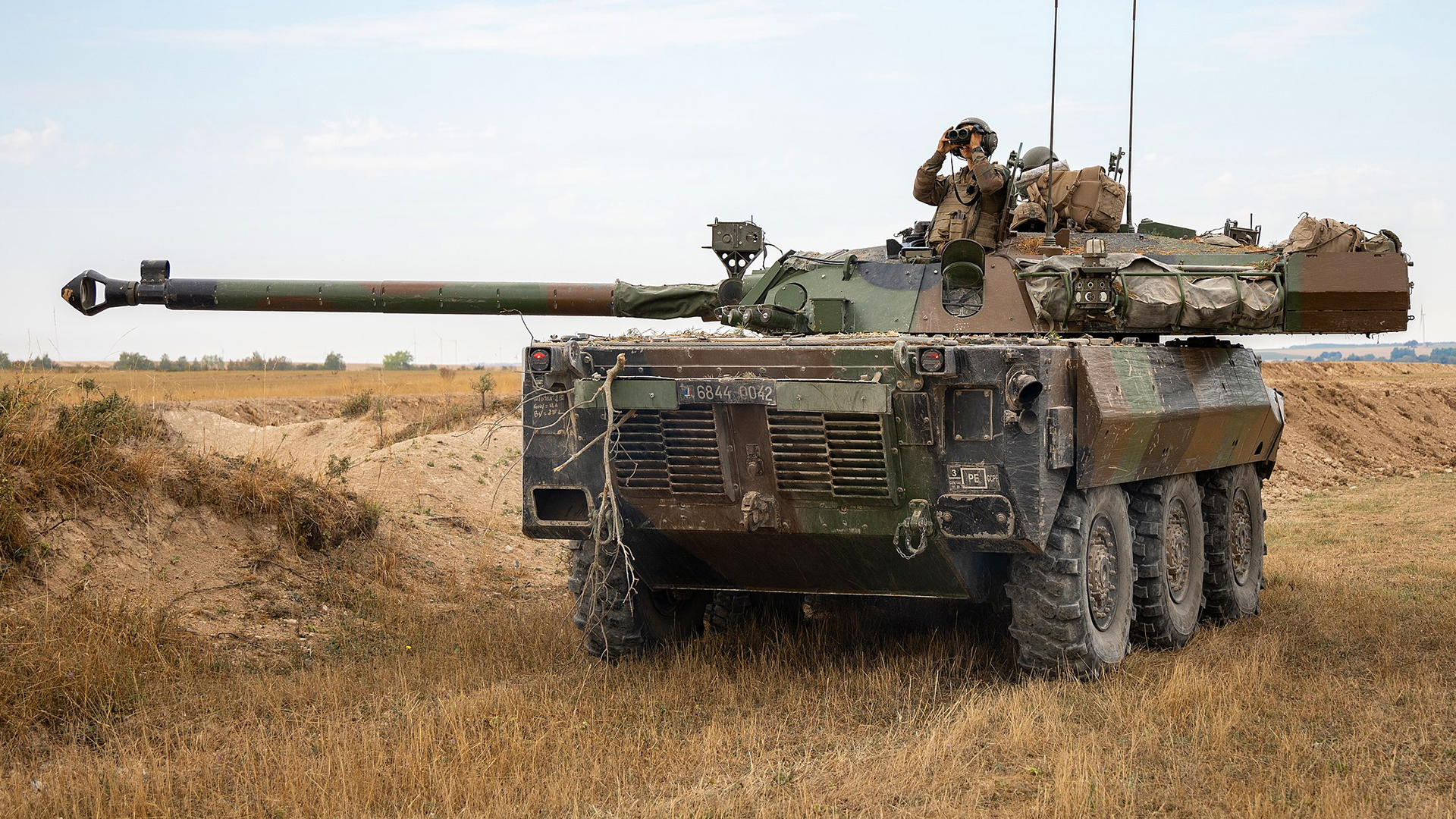When it comes to the willingness of Ukraine’s international partners to send heavier Western armored vehicles, the floodgates finally seem to be opening. The Ukrainian military is now set to receive AMX-10RC heavy armored cars from France and Marder infantry fighting vehicles from Germany, along with Bradley Fighting Vehicles from the United States.
The Pentagon formally announced plans to send 50 M2A2-ODS Bradleys, as well as 500 Tube-launched, Optically tracked, Wire-guided (TOW) anti-tank missiles and 250,000 rounds of 25mm ammunition, as part of a larger military aid package for Ukraine today. The Pentagon’s top spokesperson, Air Force Brig. Gen. Patrick Ryder, had confirmed yesterday that Bradleys would be part of the package, but did not provide additional details. You can learn more about what this particular development might mean for Ukraine’s forces in The War Zone‘s separate deep-dive on the Bradley donation.

Also yesterday, officials in Germany confirmed plans to send Marders to Ukraine, something that has been under consideration in Berlin for months. German Chancellor Olaf Scholz had pushed back against transferring Marders, as well as Leopard I or II main battle tanks, to the Ukrainian military in the past ostensibly due to concerns about what the Russian government might do in response.
On Wednesday, the French government announced that AMX-10RCs would be headed to Ukraine.
Prior to this, Ukraine’s international partners have only sent Soviet-era tanks and heavily armored vehicles. They have delivered various lighter Soviet and Western-designed armored vehicles, including variants and derivatives of the American M113 armored personnel carrier.
So let’s get into these three unique new types.
France’s AMX-10RC
Though it’s not clear what variant or variants of the AMX-10RC Ukraine is now in line to receive, these 6×6 armored cars are the lightest, but most heavily armed — in terms of primary gun system — of the three vehicles in question.
Developed in the 1970s, the original version weighed some 17.4 tons and had a top speed on improved roads of around 53 miles per hour. It was originally amphibious, as well, being able to travel up to 4.5 miles per hour on the water using a pair of hydrojets.

An up-armored configuration was subsequently introduced, increasing the overall weight to 18.3 tons and eliminating its ability to swim. Both variants had a crew of four and had the same armament, consisting of a 105mm main gun, which can fire high-explosive and anti-tank rounds, and a co-axial 7.62x51mm machine gun, in a fully traversable turret. An additional 7.62x51mm or .50 caliber machine gun could be mounted on top of the turret. An interesting feature of the design is its adjustable suspension system, which can help the crew aim the main gun at targets otherwise outside of the turret’s field of fire.

In the 2000s, the French Army hired defense contractor Nexter to upgrade 256 of its remaining AMX-10RCs to a new configuration known as AMX-10RCR. The complete package included suspension and drivetrain improvements, a new digital battlefield management system, an updated communications suite, new self-defense smoke grenade launchers.
New add-on armor packages were developed for the RCR, including one called SEPAR that features slat screens primarily designed to defeat rocket-propelled grenades and other similar light infantry anti-tank weapons. The base RCR configuration weighs 19 tons, but the vehicle’s weight climbs to 24 tons with the SEPAR applique armor fitted.
It is not clear yet what types of AMX-10RC France plans to send to Ukraine and whether their configuration might be further modified, either to meet specific demands of the conflict or to remove certain sensitive systems, before they are delivered. It’s also worth noting that the AMX-10RC’s main gun fires a distinctive type of 105mm ammunition that is not used in any other weapon system currently in Ukrainian service. The British-designed 105mm guns found on Slovenian M-55S tanks that Ukrainian forces received last year fire different rounds.
German Marder 1
Unlike the AMX-10RC, the German Marder 1 is a heavier-tracked armored vehicle, the formal development of which began in the 1960s. The original variant weighed approximately 32.18 tons and had a top speed of around 47 miles per hour.

The Marder’s original main armament consisted of a 20mm automatic cannon and a co-axial 7.62x51mm machine gun in a turret on top. Later versions could be equipped with a Milan anti-tank missile launcher – a weapon system Ukraine has already received in its man-portable form – and an additional 7.62x51mm machine gun in a remotely-operated mount at the rear of the vehicle.
An infantry fighting vehicle, the Marder was designed to be operated by a crew of 4 and five additional soldiers. One of the crew members was expected to also be a member of this squad and dismount after reaching the drop-off point.
A number of improved variants of the Marder 1 were subsequently developed. The Marder 1A3, which weighs in at around 38.58 tons, has additional armor and an improved suspension among other things compared to older versions, which mainly featured improvements to the vehicle’s fire control and communications suites. The 1A4 variant again features a new radio, while the 1A5 adds yet more armor protection, raising the weight again, to 41.2 tons. The latest 1A5A1 types have even more substantive upgrades including new MELLS anti-tank missile launchers and advanced sensors, as you can read more about here.

As for which version Ukraine may get, with newer 1A5 and 1A5A1 models still in very active service with the German Army, it seems more likely that the Ukrainian armed forces will get older types. German defense contractor Rheinmetall reportedly has some 250 Marder 1A3s in its warehouses, a stockpile that would seem easiest to draw from.
American M2 Bradley
The Bradley Fighting Vehicle is similar in form and function, in very broad strokes, to the Marder 1. Developed in the 1970s, the initial variant of the Bradley had a weight of just over 25 tons and could get up to a speed of 41 miles per hour on the road. A fully-traversing turret on top contained a 25mm automatic cannon and a 7.62x51mm, and also had a two-round launcher for variants of the TOW missile.

The Bradley was originally designed to act as an infantry fighting vehicle and a heavily armed and armored scout platform. The Bradley Infantry Fighting Vehicle was designated as the M2, while the Cavalry Fighting Vehicle became the M3. Other more specialized variants of the platform were also subsequently developed.
Externally, the two cores types are virtually identical, with only minor external differences in the arrangement of certain vision blocks and firing ports, as well as different internal loadouts. Both have a crew of three, but the inside of the M2 is intended to carry up to six troops while the M3 has space for a smaller number of cavalry scouts and other ammunition and equipment.
Various upgrade programs in the 1980s led to the A1 and A2 variants of the Bradley, with the original versions sometimes now referred to as A0s. The A1 added the ability to fire improved TOW II missiles and a fire suppression system, while the A2 received extra armor, including mounts for add-on explosive reactive armor (ERA), and improvements to the engine and suspension, among other things. As a result of its more substantial upgrades, the A2’s weight grew to 32 tons.
The U.S. Army’s experience with the Bradley family in Kuwait and Iraq during Operation Desert Storm, or ODS, in 1991 prompted another upgrade package named after that campaign. The resulting M2A2-ODS and M3A2-ODS variants featured substantial sensor and networking improvements, including a new then state-of-the-art thermal vision system, as well as the addition of an infrared countermeasures system to defeat certain kinds of anti-tank missiles.
The video below shows footage of Bradleys, as well as other armored vehicles, in action during Operation Desert Storm.

In 2000, the U.S. Army began receiving new A3 variants, which have a slew of sensor, communications, fire control, networking, and drivetrain improvements, as well as armor and other survivability upgrades, adding another ton to the vehicle’s weight over the A2 and A2-ODS types. Just in recent years, the service has begun receiving new and even more advanced A4 versions, which you can read more about here.
Ukraine is set to get M2A2-ODS variants, according to the Pentagon. This makes sense as the ODS subtype is the only version of the Bradley known to have been exported in recent years. Lebanon received a batch of M2A2-ODSs in 2019. Croatia, a NATO member, announced that it had finalized a plan to buy its own fleet of M2A2-ODSs in January 2022. Prior to this, Saudi Arabia was the only foreign operator of the Bradley family, having acquired hundreds of original A0 variants starting in 1990 and subsequently upgrading to the A2 standard.

Impact On The battlefield
Though not the Western tanks that Ukrainian officials have been asking for repeatedly for months now, these heavier armored vehicles could still definitely be a boon to the country’s forces as they continue to press their advances against their Russian opponents in the eastern and southern ends of the country. All three types are combat proven, each having been employed in multiple conflicts around the world since their respective introductions. In Ukraine, tanks and other heavy armored vehicles continue to see significant use on both sides, despite a reinvigorated debate about whether advanced anti-tank missiles and other threats have rendered them obsolete.
Though not necessarily ideal for head-to-head combat against enemy tanks, both the AMX-10RC and the Bradleys, with their 105mm guns and TOW missiles, respectively, could still be used as mobile anti-tank platforms together with shoot-and-scoot tactics. Ukrainian forces are already employing TOW from launchers mounted on American-supplied Humvees. If the Marder 1s come equipped with Milans or some other form of anti-tank missile, they could be used in this role, as well.
During Operation Desert Storm, Bradleys demonstrated their ability to knock out older Soviet-designed tanks using their 25mm main guns, as well. However, it’s unclear if that performance was directly linked to the use of armor-piercing ammunition with depleted uranium penetrators, which it seems unlikely Ukraine will receive with its Bradleys as a matter of more general U.S. government export policies.
The weapons on the AMX-10RCs, Marder 1s, and Bradleys would be useful against a variety of other targets, including lighter armored and unarmored vehicles, fortifications and other structures, and enemy troops behind other kinds of hard cover and in the open. The Bradleys and Marder 1s could, of course, also be used in the primary role as infantry fighting vehicles, offering protection and fire support to advancing infantry.
In addition, the night and thermal vision capabilities found on all three vehicles are significantly greater than what is found on many of Ukraine’s existing fleets of heavier armored vehicles, too. The Bradley’s sensor suite, even on older variants like the A2-ODS, is particularly advanced compared to older Soviet-designed types in Ukrainian service, even with more recent upgrade packages. This could make the vehicles especially effective against Russian ground forces, which have demonstrably limited capabilities to continue fighting after the sun goes down.

All of these capabilities would be valuable to Ukrainian forces who are now looking increasingly toward a major campaign against entrenched Russian forces occupying the Crimean Peninsula.
Are Tanks Next?
Beyond all this, the AMX-10RC, Marder 1, and Bradley, very broadly, represent vehicles in a class one step below actual tanks in terms of both capability and sustainment demands, such as training and logistical support. If Ukrainian forces are able to demonstrate their proficiency in operating and maintaining these types, it could become more difficult for Ukraine’s international partners to explain why Western tanks cannot be transferred, as well.
“On the tank issue, it’s about the right capability in multiple facets, and maintenance and sustainment is one [sic] of them. And it’s an important one, especially when there’s alternative capabilities that you know, might offer easier maintenance or sustainment,” Laura Cooper, the deputy assistant secretary of defense for Russia, Ukraine, and Eurasia, said at a press briefing about the new aid package today. “The Bradley is a capability that we could envision them really using to great effect along with the training. It’s not a capability without the training … so we’re providing, you know, the equipment, the training, the ability to maintain and sustain [these vehicles].”
“Ukraine does need tanks. It’s one of the reasons that we’ve partnered with the Netherlands to refurbish a number of T-72 tanks that are already arriving on the battlefields,” Cooper also said. “But we have to be cognizant of maintenance and sustainment considerations with tanks, and certainly we know that the Abrams tank in addition to being a gas guzzler is quite challenging to maintain. So we want to look across the board at the range of tank capabilities and see where we can all support Ukraine.”

The War Zone explored the pros and cons of sending variants of the Abrams to Ukraine, including the fuel-hungry and maintenance-intensive nature of the design, after a senior U.S. defense official said that the possibility of sending American tanks to Ukraine was “absolutely on the table” back in September 2022. Those issues are in no small part due to the Abrams’ use of a gas turbine propulsion system, rather than one or more diesel engines, as are much more commonly used in modern tanks.
The Wall Street Journal notably reported yesterday that the government of Poland is now considering transferring some of its stock of diesel-powered German-made Leopard 2 main battle tanks to Ukraine, citing an unnamed senior Polish diplomat. Today, a pair of Finnish politicians also called for giving Ukrainian forces some of that country’s Leopard 2s. Officials in Denmark are reportedly receptive to the idea of sending some of their stocks of these tanks, too.
However, any such a transfer would require approval from authorities in Berlin, who still seem to be reticent to be involved in sending tanks to the Ukrainian armed forces. Wolfgang Hellmich, a spokesperson for Germany’s ruling Social Democratic Party, was quoted recently as having described the Marder 1 as somehow a “defensive” armored vehicle, while Leopard 2s would be “offensive” in nature, and therefore an escalation risk.
Regardless, sending the Bradleys, as well as the AMX-10RCs and Marder 1s, is already the latest example of the ever-expanding scope of what types of weapon systems the United States and its allies and partners are willing to turn over to their Ukrainian counterparts. However, the scale and scope of foreign military aid to Ukraine may continue to evolve, the decision by the United States, France, and Germany to send heavier armored vehicles is a significant development that could have major impacts on the battlefield.
Contact the author: joe@thedrive.com

